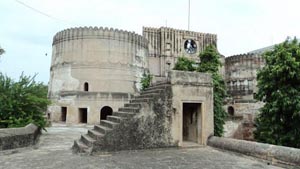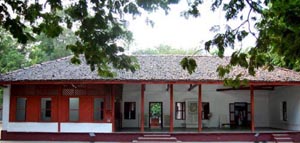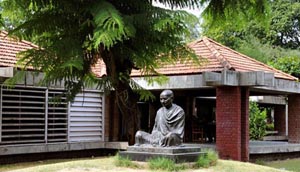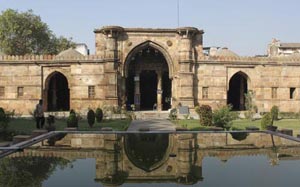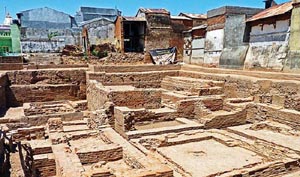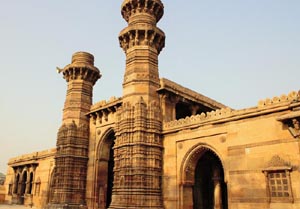Ahmedabad Monuments - Historical Places to Visit in Ahmedabad
Historical Monuments / Forts / Palaces / Places to Visit in Ahmedabad
Here you can check list of names and information on famous historical forts / palaces / monuments / places to visit in Ahmedabad, Gujarat, India. These famous monuments of Ahmedabad are most visited and most sought after best tourist places. You can also find images of Ahmedabad monuments / places / forts / palaces.
Bhadra Fort and Teen Darwaza was built by Sultan Ahmad Shah in the 15 century is the most primordial monuments in the city of Ahmadabad. Bhadra Fort was named in keenness to Goddess Bhadra Kali whereas Teen Darwaja was built as the royal entrance. This monument was regarded as one of the finest monuments of Ahmadabad. The monument was the magnificence of Ahmed Saha's era.
MK Gandhi was a person who vouched for Indian products or let's calls it swadeshi products and that is why also he was seen with the 'Charkha'. Today taking that as an inspiration, Hriday Kunj has become a place from where many beautiful handicrafts, spinning wheels and handmade paper are produced. Then inside of the place also has a prayer ground that can fit at least a 100 people. History says that MK Gandhi used to pray here with his followers.
It is also believed that the Sabarmati ashram has connection to the great saint of ancient India, Dadhichi Rishi who had given his body bones to gods make weapons in a war to win against the demons. It is said this ashram is one his sites therefore along with the historical significance the ashram also have some mythical and mythological importance. The location of the ashram is such that it lies in between a jail and a crematorium.
The architectural design and the artwork seen in the tomb of Ahmed Shah is one of a kind. The most prominent thing that one will notice is the square shaped tomb that is the largest part and the windows that have latticed stone. The chamber that is in the central part of the structure is where the tomb lies and as per the old custom women is not allowed there. Walk across the main road and there you will find the Rani-no Hajiro where the tombs of the queens of the Ahmed Shah are found.
Architecturally, the town has its own beauty. Though the people of the Lothal city construct a new place entirely many old features were kept intact. There is a shadow bay which was positioned to attach the flowing canal to the mooring for the purpose of cleaning the ships. Houses that are present within the city were reconstructed but without the removal of the debris caused by flood. This impacted the strength of the city to an extent.
Shaking Minarets is also known as the Jhulta Minar, for its shaking principals in a stone structure. There is still a controversy over its architect, who built this rare structure. There are two names in the reference of history records available of that time. Many historians believe that it was built by a slave of Ahmed Shah, who is known as the Sidi Bashir. The other person is known to be a court Nobel of Muzaffarid Dynasty known as the Malik Sarang.
- Andaman Nicobar Monuments
- Andhra Pradesh Monuments
- Assam Monuments
- Bihar Monuments
- Chhattisgarh Monuments
- New Delhi Monuments
- Goa Monuments
- Gujarat Monuments
- Haryana Monuments
- Himachal Pradesh Monuments
- Jammu and Kashmir Monuments
- Karnataka Monuments
- Kerala Monuments
- Madhya Pradesh Monuments
- Maharashtra Monuments
- Odisha Monuments
- Punjab Monuments
- Rajasthan Monuments
- Tamil Nadu Monuments
- Telangana Monuments
- Uttar Pradesh Monuments
- West Bengal Monuments
